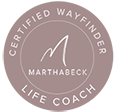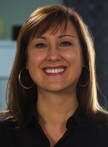Many men dream of finding a mail order bride. Some of them get lucky and find the perfect woman for them. However, many men are not so lucky and end up getting scammed by fake mail order brides. In this article, we will provide you with some tips on how to find and communicate with mail order brides.
The first step is to find a reputable mail order bride website. There are many websites that offer this service, but not all of them are legitimate. You need to be careful when choosing a website as there are many scammers out there. Make sure to read reviews of the website before you sign up.
Once you have found a legitimate website, the next step is to create a profile. Make sure to be honest when creating your profile as you want to find a woman who will love you for who you are. Include information about your hobbies and interests.
After you have created your profile, it is time to start searching for mail order brides. The website should have a search function that allows you to search for women based on their location, age, and interests. Once you have found a few women you are interested in, it is time to start communicating with them.
Many mail order bride websites offer a chat function that allows you to chat with the women in real-time. This is a great way to get to know the women and see if there is a connection. If you feel like there is a connection, you can then take things to the next level and arrange a meeting.
Finding and communicating with mail order brides can be a challenge, but it is definitely possible. With a little effort, you can find the perfect woman for you. Just make sure to be careful and use a reputable website.
How to Make a Mail Order Bride Feel at Home
There are a few things you can do to make your mail order bride feel at home. First, it is important to make sure that she has a comfortable place to stay. This means providing her with a room that is clean and comfortable, with plenty of space for her to move around. It is also important to make sure that she has access to all the amenities she needs, such as a kitchen and bathroom.
Second, it is important to help her feel welcome in her new home. This means being friendly and welcoming to her, and making sure that she feels like she belongs. One way to do this is to introduce her to your friends and family, and to make sure that she feels included in your social activities.
Third, it is important to make sure that she has the support she needs to adjust to her new life. This means providing her with information about her new community, and helping her to find resources she needs, such as schools, job opportunities, and social services. It is also important to be patient with her as she adjusts to her new surroundings, and to be understanding of any homesickness she may feel.
How to Keep a Mail Order Bride Happy
When you are in a relationship with a mail order bride, it is important to keep her happy. There are a few things you can do to make sure she is always happy. One, make sure you communicate with her regularly. This means keeping in touch through text, email, or even video chat. Two, send her flowers or small gifts regularly. This will show her that you are thinking of her and that you care about her. Three, make sure you spend time with her. This means going on dates, taking walks, and just spending time together. fourth, always be honest with her. This means being truthful about your feelings and what you want from the relationship. Lastly, always be respectful of her. This means treating her with respect and never taking advantage of her.
How to Find the Perfect Mail Order Bride for You
Many men continue to seek out wives from other countries, and many of these women are willing to marry sight unseen. The industry has changed over the years, as the internet has made it easier for men to find potential brides. However, the concept of mail order wife remains the same: men seeking out women from other cultures and countries in order to marry.
There are a few things to keep in mind when looking for the perfect mail order bride for you. The first is to make sure that you find a reputable site that specializes in this type of service. There are a lot of scams out there, so you want to make sure that you are using a trusted source.
Once you have found a few potential sites, take the time to read through their profiles and see if you have anything in common with the women. You may also want to read reviews of the sites before you sign up for anything.
When you have found a few potential candidates, the next step is to start communication with them. Be sure to be polite and respectful, as you would with any potential partner. Ask questions about their interests and hobbies, and get to know them as a person.
Once you have gotten to know them, you can start to narrow down your choices and decide which one is the right fit for you. Be sure to take your time and really get to know them before making any final decisions.

Hi and Welcome!
I am Jennifer Washington, a Certified Martha Beck Life Coach, as well as an Integrative Mental Health coach. I’m the creator of What Now Life Coaching. I have run many Vision Board Workshops and Connections Groups and has been coaching 1:1 for over 10 years.

Why I Became A Life Coach
A few years ago I woke up inside myself. Some would describe it as a mid-life crisis or a meltdown. I knew I needed help, but I didn’t know how to start. The closest I could come to activating a search engine investigation was “What Now?” I came to a cruel realization that I had done everything I was ‘supposed’ to do and I was miserable.
Fast forward to the present, after Life Coaching entered my world. I now describe that melt down as my awakening. I’ve discovered my inner guidance, how it works and I can teach you!
If you are at a point in your journey where the most resounding question you have is “What Now?” please
email: [email protected]
What Clients Are Saying About What Now Life Coaching
Jennifer Washington is awesome and inspiring. Her guidance has been life changing. Jenn has walked beside me in my life journey and is always rooting for me. What a wonderful feeling having her in my corner. Jennifer continues to support my search for worthiness and peace. She constantly inspires me to continue to work toward emotional healing – not doing it for me, but giving me the tools to move forward with a courageous desire to overcome my self-imposed limitations. Jennifer’s ability to guide and remind me of my worth and helping me see myself in a realistic light is amazing and a complete blessing to me. She has lead me to recognize and see past my imperfection to understand “I am good enough”. Thank you Jennifer for your generous and encouraging guidance and support while taking this journey with me. – Marsha; Corporate Consultant
“I think what you do when you are listening to me during our sessions is listening for meaning behind the stories…the content is kind of the ‘noise.’ I see now I have choices in my life (therefore freedom), to make the best ones I can with what I have, to take responsibility for outcomes, ‘forgiving myself. Letting others make their own choices. Having a choice about how to feel about outcomes. Not taking responsibility for other people’s choices. You do good work, Sistah!
– Jaquelyn, Medical Intuitive.
I never thought I was the type of person that would ever need or want a life coach figuring I could always sort out everything by myself – that was what I had always done.
I had a certain amount of pride in that. However, my life was
starting to unravel, a little bit at a time. I was starting to wonder who I really was and how the rest of my life was going to play out. Even more importantly I could feel I wasn’t
living a very authentic life and was definitely not living to my potential. Nor was I living the creative life that I yearned for. I had several projects on the go, some failing,
some barely started, but nothing felt right. I knew I wasn’t moving in the right direction. And really, on a whim I called Jen. What could it hurt I thought? The truth is it didn’t
hurt, and it was easy compared to how I was trying to sort though challenges on my own. The most important thing that Jen has done is to give me the tools I need to manage problems
and even my relationships. She has helped me to see past my old
habitual ways of trying to ‘fix’ problems and people. Just a little shift in my thinking and perceptions has produced amazing results. Jen is intuitive, nonjudgemental and positive. I look forward to our sessions. Every week I see real life results. Today I look forward to the future with energy and a happy expectation.
Ruth, Author
Find me Here: Facebook, Twitter, Pinterest, Instagram